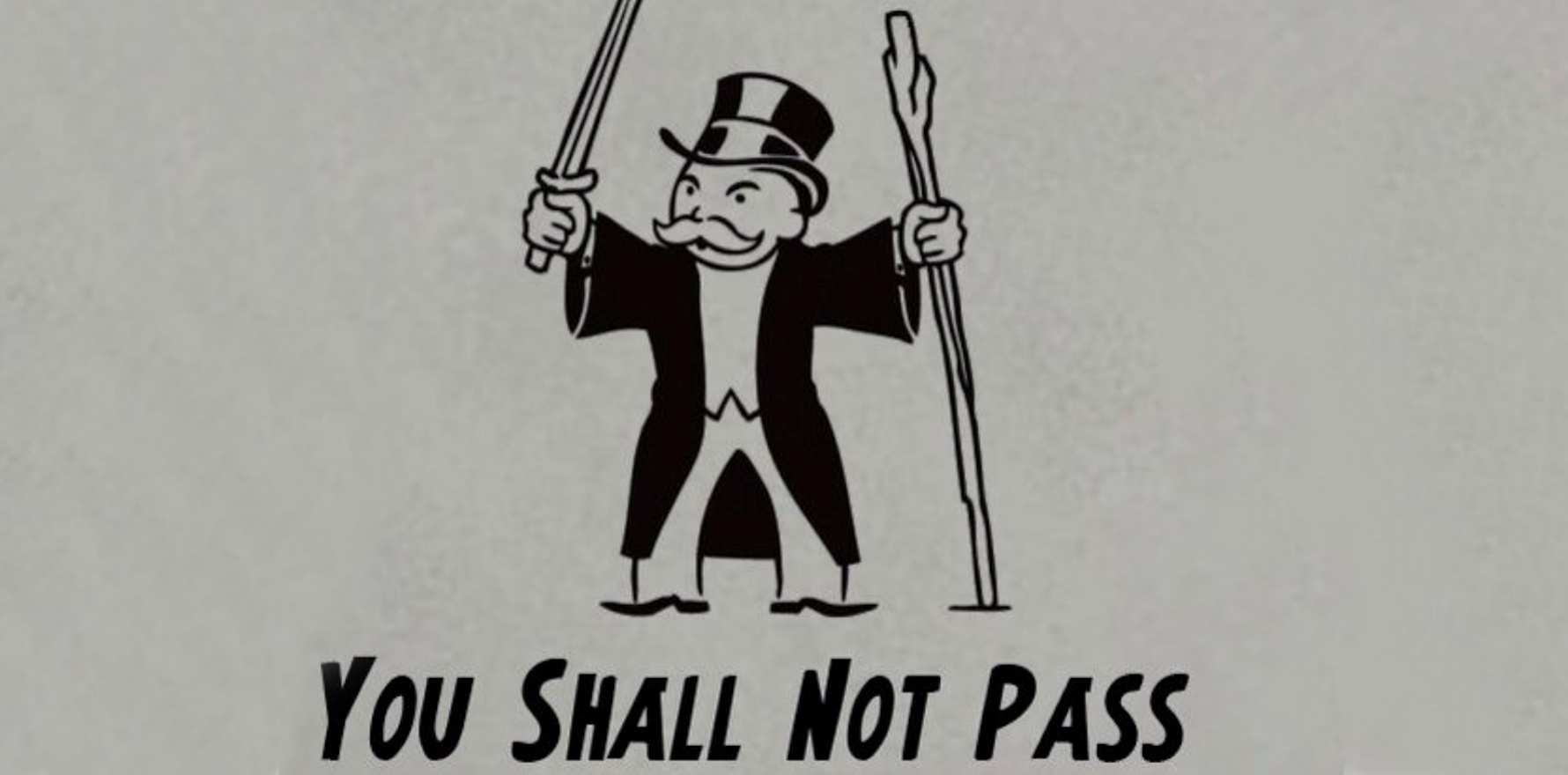eRx Script Exchange, Fred IT and Telstra Health are in trouble again for acting like a monopoly. But hey, they’re a monopoly.
New rumblings of discontent over the eRx Script Exchange, government-mandated monopoly on electronic scripts started emerging in mid-May when Fred IT, (owned by Telstra Health), which largely built and designed eRx for the government, decided that as of 1 July it would start charging for processing private electronic scripts.
Until that announcement, everyone had thought the deal with Fred IT to run the whole of the script exchange was that they got paid to process MBS scripts and did the private stuff for free.
Unbeknownst to everyone but the government and Telstra Health apparently, that was never in the fine print of the original tender.
The government didn’t consider it its business when Fred IT told everyone that the private script market was growing so fast – 60% in the last 18 months – that it couldn’t afford to process them anymore without some sort of income to support the effort.
So as of 1 July they added a 15c charge to every private electronic script that they processed.
This article originally ran on TMR’s sister site, Health Services Daily. TMR readers can sign up for a discounted subscription.
Back-of-envelope maths suggests that instantly added about $5-7 million to the bottom line of Fred IT and its owner Telstra Health and $1200 per year to the running costs of your average community pharmacy.
The objections and conspiracy theories started to emerge pretty quickly after the announcement. In some ways you can see why.
Two years ago, the Department of Health, Disability and Ageing (DOHDA) put a tender out to run an electronic script exchange (eRx) for all MBS scripts – which is most scripts – and between the only two companies that were at that point running exchanges – Fred IT and MediSecure – Fred IT won the day.
MediSecure, now (in)famous for being hacked for the data of approximately 13 million patients, only had 10% of the eRx market at the time of the tender, but they had felt they had a very competitive bid.
Upon losing they speculated that Telstra Health may have underbid them at a loss with a plan to make up the money once they were the only game in town. If they did it that may have been smart business. But of course, some people didn’t think it was very fair.
After losing the tender, MediSecure quickly restructured themselves and developed what they thought was a sustainable business model servicing the private script market, which they weren’t prevented from doing in the original tender.
Then for some reason the government decided that even though it apparently had no interest in the private script market, having two exchanges in that market wasn’t a good idea either.
DoHDA effectively changed the law so that there could only be one script exchange for everything and given the main one contracted to DoHDA for MBS scripts was Telstra Health via Fred IT, MediSecure had to go.
Effectively the government shut down a private company that had taken a not insignificant part in the original development of the centralised electronic script exchange idea, and in real-time prescription monitoring, and was the only possible alternative out there should something go wrong with Telstra Health’s efforts processing MBS scripts – so no Plan B.
You would not have been happy if you were a private investor in MediSecure. What the government seemed to be doing was in any normal market anti-competitive (note: such investors would probably would have lost their money anyway after the hack).
Little wonder that the noise still persists around the value and wisdom of the government backing just one horse on such a vital and centralised piece of digital health system infrastructure.
To summarise that noise, detractors of the monopoly say:
- That Telstra Health underbid the original tender with a plan to claw back the profit after the originally awarded four-year contract of $99 million was secured, and, it effectively has done that now by subsequently securing a nice $49 million addendum to run the national real-time script monitoring program, and now, another $5-7 million for running private scripts.
- That the subsequent $49 million and $5-7 million were largely profit for Telstra Health because before those deals were done most of the costs in running eRx were already sunk, fixed and being met. In other words, this wasn’t necessarily good value for taxpayers and the government was turning a blind eye.
- That without any competitors Telstra Health isn’t incentivised to innovate and there is no plan B if something should go significantly wrong with how the eRx is being run today.
What might advocates of the monopoly argue though?
- Consolidating to one provider via a competitive tender has produced the best value for taxpayers, perhaps. Notably, the very advent of a national electronic script exchange was set to cost the government a lot more than $100 million per four years eventually based on how things were unfolding. Prior to its existence there was no cost for electronic scripts, but once it was up, running and growing the government needed some way of putting a cap on a rapidly growing transactional cost to the system. And it has.
- The government sees the eRx as government infrastructure not a Telstra Health service at all. If the government built it, it would be one provider only anyway, so redundancy and innovative tension were never really in play in this project.
- The government picked the best and most capable provider to deliver the technology needed, perhaps.
It is probably important to note here that Fred IT and Telstra Health didn’t, with any intent, build a monopoly.
They tendered for the eRx service which the government wanted to control and run and they won the tender. So, people who argue that a monopoly in electronic script transactions is a bad thing shouldn’t be pointing any fingers at Telstra Health.
Notably, the tender had terms which effectively transferred all the IP in the exchange to the government.It’s probably also worth noting that the eRx was always a government project. It funded a lot of the original eRx build and helped co-ordinate its success via the Australian Digital Health Agency.
But having built the system and dispensed with the only competitor what if Fred IT fell out of favour or key staff left and it started performing really badly?
How would the government pick up all that IP and keep running with it, without significant additional cost or disruption? It probably has a plan, I guess. But as things stand today it hasn’t got much if any technical capability to do this.
Meanwhile, at the edges of terms around the original tender Telstra Health certainly seems to be taking every opportunity to optimise its financial position via what some might regard as “loopholes”.
But if the government hasn’t put any constraints on certain parts of how you run your service aren’t you duty bound to your shareholders to extract as much value as you can from your contract?
The most obvious optimisation is the introduction of a 15c per script charge for every private script running through the exchange.
With the rise and rise of the private telehealth platform ecosystem – Eucalyptus, Instant Scripts, Mosh, Doctors on Demand, My Emergency Doctor, Blua, Midnight health and so on (we count over 40 now) – private scripts are going to be an good growth business for Telstra Health while they hold the eRx contract.
Given that much of the infrastructure is in place and running, you’d imagine that a lot of the 15c is falling as profit for Telstra Health – some has to be remitted to the pharmacy dispensing and GP patient management system vendors to keep them happy, and they are, but most of it is going to Fred IT.
At 15c per private script, and about 6000 community pharmacies nationally, private scripts are on average costing each pharmacy another $1,200 per year. That’s not a lot over a year so it likely goes unnoticed by most pharmacies, although amortised across the big banner groups, it would come to a lot.
Regardless you might have expected that maybe the all-powerful Pharmacy Guild might have stood up and said something to the DoHDA.
Transactional fees on platform businesses are a very neat but sometimes insidious business model. Iconic masters of the model on a recent historical global scale include Microsoft, Salesforce, Amazon, and so on.
History is in fact littered with distribution monopolies that governments allowed to flourish in the name of progress. You can put up the price bit by bit and one day the user looks back and wonders what happened.
What could a struggling independent pharmacy do about an extra $120 or so per month even if they were annoyed?
It’s a monopoly and the private script part of the monopoly, apparently, is not controlled by or cared for by the government.
When Health Services Daily asked the DoHDA about the imposition of the new charge and its possible ripple effects through the pharmacy ecosystem we got this reply from a spokesperson:
“The DOHDA has contracted Fred IT to deliver the National Prescription Delivery Service (NPDS), which is owned by Fred IT [Telstra Health]. The Department funds Pharmaceutical Benefits Scheme (PBS) and Repatriation Pharmaceutical Benefits Scheme (RPBS) prescriptions sent via the NPDS resulting in a zero-cost service for electronic prescriptions for all subsidised medicines.
“The announcement made by eRx Script Exchange on 14 May 2025 to begin charging for private prescriptions sent via their eRx Script Exchange network from 1 July 2025 is a business decision made solely by Fred IT.”
Cool, but if the DoDHA is washing its hands of private scripts, why did it think it was necessary to kill off MediSecure, which before the hack was making a living from the private script market and was at least a competitor in this part of the market to keep Fred IT honest.
And why was the department not explicit about all this in the original eRx tender? It’s like it didn’t think about what could happen and started making stuff up as it went along.
Technically, Telstra Health could double the private script charge to 30c next week and it’s, sort of, no one’s business.
Fred IT said this to us about the new charge:
“While historically eRx did not bill for private scripts, we cannot sustain the high level of growth and associated costs and as such have introduced the private script fee from 1 July.
“The 15c fee for eligible private prescriptions has been set by eRx to reflect the cost of delivering a secure, reliable service for private prescriptions—without government funding support. It is also equivalent to the original Electronic Prescription Fee arrangements since 2009 within the Community Pharmacy Agreements (prior to the NPDS contract).
“The growth in eRx usage for private scripts reflects broader trends—particularly the rise in private business models such as telehealth providers and a growing focus on ‘wellness’ health services.”
From a commercial perspective any of what Fred IT is saying could be true.
But if it isn’t, and most of that additional $5-7 million is profit, and anyone thinks that’s not entirely a fair thing given that eRx is essentially a government-mandated monopoly being run by a private company, then talk to the DoHDA, not Fred IT. The department thinks it’s okay.
Of course, the 15c isn’t the end of the power of a monopoly in electronic script access or the possible loopholes.
The subsequent contract to the eRx tender, also awarded to Fred IT for $49 million for running the real-time prescription monitoring service, on top its MBS script contract of $99 million, looks like it might be neatly profitable as well. After all, all the infrastructure was there to run RTPM and prior to MediSecure being forced to shut down it was being run jointly between MediSecure and Fred IT.
That all goes to the conspiracy theory that Fred IT worked out they could underbid for the original eRx contract in order to secure it.
If the private script market is growing like bananas it’s pretty logical that Fred IT would want to cover additional costs, but how much extra did Fred IT really need to run the RTPM if they were already running it, and how much more did they need to cover the growth of the private script market?
Related
And if you put the additional price the DoHDA is now paying for RTPM and pharmacies are paying for private scripts, how’s that mapping out as value to taxpayers?
Would not the pharmacies seek to pass their new cost onto their customers anyway?
None of this is Fred IT and Telstra Health’s problem.
They are not doing anything illegal. They are simply working within the bounds of the terms of their government-mandated monopoly.
What else in the eRx contract might end up as additional revenue for what is effectively a monopoly provider?
One example might be a new feature coming to every patient’s electronic script in the near future, developed by Fred IT, for the government, called PONS, which stands for patient ordering and notification service.
Anyone who’s used an electronic script would have noticed that it has a green button at the bottom, which when clicked on presents most of the private script management app providers for a patient to choose from.
There are about 15 apps listed, and you can click on any and go on to download them to have them manage your scripts and deliver your script, if you want to do more than just make your way to your pharmacy and show them the barcode on your smartphone.
Until now, detractors of the Fred IT eRx contract have complained that Fred IT prioritised its particular app, Medview, unfairly and put it at the top of the list. The rest is in alphabetical order.
It’s sort of the equivalent of having a Samsung Smart TV where Samsung have a major deal with Netflix so Netflix is the first streaming app you see everywhere. It’s biasing access.
In the digital world, visibility is access, access is distribution and distribution is power. That’s how Google ads work.
Well, when PONS is finished, all 15 of those privately developed management apps will disappear and PONS will be the only app left for us punters.
PONS is essentially Medview, Fred IT’s app, with a bit of an upgrade.
Before you start crying foul here, the idea of there being only one app for every patient to access across Australia to manage their scripts when they get an e-script was not the brainchild of an out of control and monopolistic Fred IT.
The DoHDA rang Fred IT, and said that the green button was confusing. They wanted it all consolidated to one service. One that it, in effect, controlled. Also one, that FRED IT in its position as the only eRx provider, would stand to make even more money out of.
So who’s acting like the monopoly here and is it the right play?
Fifteen apps in a line is pretty confusing on the one hand. But is manipulating the distribution power to bias access to only one app for every patient in Australia getting an e-script a benefit to the patient or not?
It might actually be.
According to Fred IT, a lot of the other apps listed got virtually no traffic for sign-ups anyway because some of them are obviously marketed in different ways and people were getting confused.
For instance, the Terry White app is marketed directly to its customers via its huge store network, and the MedAdvisor app is marketed via every pharmacy that is using that app to develop a better relationship with its customers.
It’s unlikely that the rationalisation on the e-script will create a script management app monopoly for either Fred IT or the government. Point of sale marketing in the big pharmacy banner groups will be a strong channel. The problem, as always will be how the independent pharmacies cope.
Putting only your app on the major point of digital access has the ring of Microsoft only putting Microsoft Explorer web browser on all its Office software back in the 1990s, hence locking out other big and good browsers like Chrome, Firefox and Safari.
Or Facebook turning off news feeds of news organisations in Australia because it didn’t suit their revenue model.
It’s exercising the power of control over distribution as a monopoly to optimise access to patient data.
I wonder what the FRED IT contract is saying about who owns all that patient data that eRx is now gathering at speed?
If you think about Fred IT’s eRx monopoly in the context that the government simply contracted a supplier to do a thing that it wholly wants to control itself, then the idea that eRx is a monopoly should theoretically at least, not be a problem.
After all, the government has regulated for plenty of monopolies in the interests of the public over the years. Australia Post is a woeful continuing one for us publishers who still have print products.
So, is the government owning and running the electronic script infrastructure in the manner it is currently doing a good or a bad thing for patients?
We probably should all be grateful that we even have a working, scalable and rapidly expanding national e-script exchange that works so well. It’s a neat piece of infrastructure that may never have been completed if not for covid.
Wouldn’t it be nice if we could apply all this know-how, IP and technology to get ourselves a centralised e-referral exchange for all those vital transactions between GPs, specialists, hospitals, pathology and imaging.
This of course is what the government must be thinking.
It might just be that one day the government eventually gets its head around the whole set up and takes it all in-house, including running private scripts, and having an equivalent e-referral exchange for referrals, discharge summaries and the rest.
At that point it could cut away its private helper, in this case Telstra Health, with a view to delivering even more value to patients.
If that is a possibility and a plan, then the contract risk of eRx is massive for a vendor like Telstra Health and many people would excuse it for trying to make hay while the sun is shining on any loopholes – private scripts or PONs for instance – that might exist in the current contract.
To do this article, I spoke fairly extensively to Fred IT’s iconic CEO, Paul Naismith (he had much to do with getting eRx to actually work during covid), who was nothing but transparent and open in commenting about what he thought about the situation.
He might understand the mechanics and commercialisation of all this technology and infrastructure better than anyone in the country.
The only time he seemed lost for words in our entire discussion was when I asked: “So, given you are building out all the IP and value here for the government, what do you think will happen in two years’ time when the current eRx contract comes up for renewal.”
I was on the phone to him but I got the distinct sense that when I asked that question, and it was followed by a fairly long and thoughtful pause, a wry smile had come to his face.
He declined to speculate.





